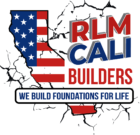What is the meaning of a stem wall base?
Perhaps a repairman for your foundation has just emerged from your dark, musty basement, dusted off the cobwebs, and informed you that there is a gaping hole in your stem wall. Perhaps your initial reaction was something along the lines of “that sounds pretty bad,” followed by, “what the heck is a stem wall and why should I be worried?” This article will teach you all about the structure and function of a stem wall base.
What is the meaning of a stem wall base?
Because they require much less cement than either a basement or a slab-on-grade, stem wall foundations are a popular choice for affordable raised construction. In stem wall foundations, the cement perimeter is raised. The use of post and pads or additional interior cement walls/support can be used to implement stem wall foundations.
The typical height of a stem wall is between 18 inches and 2 feet above the ground, with another foot to foot and a half of the wall buried below ground (this underground section is referred to as a footing). A crawlspace is the term used for the vertical space below a floor before the subfloor is installed.
Crawl spaces with a height of fewer than 18 inches can be found, but they present significant challenges for inspection and repair by most foundation service providers.
Cinder blocks topped with steel rebar and concrete are the standard material for stem wall foundations. The home’s walls can be securely fastened to this cement perimeter.
Simply put, a stem wall foundation is a raised cement wall foundation that keeps a house above flood level and provides structural support by transferring the building’s weight to the footing.
Are there typical issues with stem wall bases?
To the same extent that poor soil conditions and environmental factors can cause general deterioration in any type of foundation, this is also true of stem wall foundations. The most typical issues with raised foundations that use stem walls are:
Cement rot best describes the spalling that can occur in concrete support stem walls. Spalling occurs when concrete deteriorates due to natural weathering or chemical reactions, leaving it chipped, fractured, and unable to support its original structural integrity. It is common for improper drainage to be the cause of spalling.
Exposed rebar in the stem wall is a sign of severe water damage and can foreshadow the imminent collapse of a segment of the footing. When rust begins to grow, it puts pressure on the surrounding concrete, which eventually causes it to crack.
Cracks in the stem walls of a building may be a sign of foundation settlement, water damage, or seismic activity.
A stem wall foundation footing is often mistaken for a stem wall. The inner wall of a crawl space is called the stem wall, while the outer wall is called the footing in the field of foundation repair. Although the difference is largely one of terminology, it is important to understand what your foundation repair expert is talking about.
If you want to prevent further damage to your home’s structure, you should take care of the problems with the stem walls as soon as possible. In the same way that cavities and cracks in teeth can quickly spread and become more expensive to repair, so can damage to concrete stem walls.
Methods of Fixing Stem Wall Foundations
It’s critical to fix stem walls to keep your house from sinking. Instances of typical stem wall foundation repair include:
Underpinning the stem walls of a house is necessary because the soil around it isn’t strong enough to support the weight of the building, causing the foundation to sink and settle. Some common methods of fixing stem wall settlements are called push pier underpinning and helical pier underpinning. Home underpinning prevents further settlement and restores the original level.
Carbon fiber staples and wraps are commonly used to repair cement fractures in stem wall carbon fiber crack repair. Carbon fiber is used in combination with epoxy because it is even stronger than Kevlar. In most cases, these fixes can be finished in a day and restore your foundation’s strength.
Buildings with stem wall foundations can be seismically retrofitted (brace-and-bolted) to withstand earthquakes in the future.
Are You Curious About Stem Wall Foundation Repair?
This article discussed what a stem wall foundation is, the most common issues that arise with them (spalling, exposed rebar, and cracks), and the most common solutions to these issues (underpinning, crack repair, and seismic retrofitting).
If you need a Foundation Inspection Bellflower or repair, don’t hesitate to contact RLM Retrofit Foundation.
Stem wall spalling repair methods and costs Bellflower
What to Anticipate from Helical Pier Foundation Repair Bellflower










